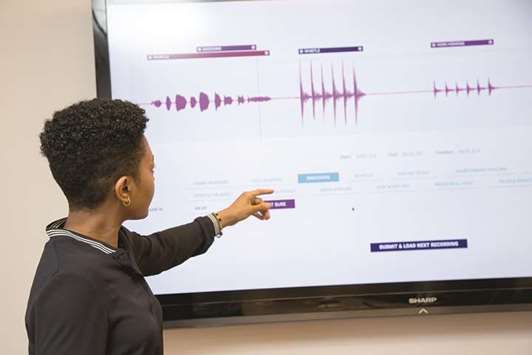How noisy is New York City? Here’s an observation from The New Yorker magazine: “In New York, there are two kinds of noise: the sounds of this city (car horns, loud neighbours, construction equipment, barking dogs) and the sound of New Yorkers complaining about it.”
Last year, more than 400,000 calls were made to the city’s ‘311’ non-emergency phone hotline - roughly one every 90 seconds - to complain about pounding jackhammers, buzzing helicopters, thundering lorries, rumbling subway trains, cars honking -and above all, noisy neighbours.
Noise in New York is now the subject of a major study by New York University and Ohio State University, which have teamed up to create the ‘Sounds of New York City’ (SONYC) project, funded by the National Science Foundation. It is being led by Juan Pablo Bello, associate professor of music technology at New York University.
“People in New York are exposed to drastic levels of noise that influence their daily lives, like sleep patterns,” Bello says.
“Everyone here can tell stories about noise, and most of them are not very favourable.” By some estimates, nine out of ten New Yorkers are regularly exposed to noise levels that the US Environmental Protection Agency classifies as damaging.
Scientists have long ago determined that noise can make people sick, increasing the risk of stress, high blood pressure and heart ailments.
At Toronto University, researchers recently also determined that the noise levels that commuters experience, whether on public transport or on their bicycles, can lead to hearing damage.
Under a five-year, $4.6 million grant from the National Science Foundation, Bello began the SONYC project two years ago to collect, for the first time ever, precise data about New York’s noise.
So far, the researchers have set up around 50 small recording sensors, with an ultimate target of about 100. At regular intervals, they take in 10 seconds of noise around them and transmit the results to Bello’s laboratory.
People’s conversations are not recorded, Bello insists. “SONYC is an environmental pollution platform, is not intended nor designed for surveillance, and we are taking every step necessary to keep it that way,” he says.
Analysis of the data collected so far has just gotten under way, but already there are a few results. A series of complaints have recently been made by people around Washington Square Park, the cause being construction noise coming after the permitted hours.
City controllers looking into the complaints could find no wrongdoing in 80 per cent of the cases. But the SONYC data told another story: in 94 per cent of the cases there had been violations. Together with the city, Bello and his team are studying how such data can best be applied in the future.
The project could also be pursued in other cities and countries, Bello said. “New York is our lab, where we can play around and because it is noisy, it’s ideal for our experiments.”
One aim is to make people more aware of how damaging noise can be. “Noise is pollution. We want people to think about noise the way they think about throwing out a candy wrapper.” – DPA

STUDY OF SOUNDS: Student Ayanna Seals shows different sources of noise according to data collected throughout New York.
